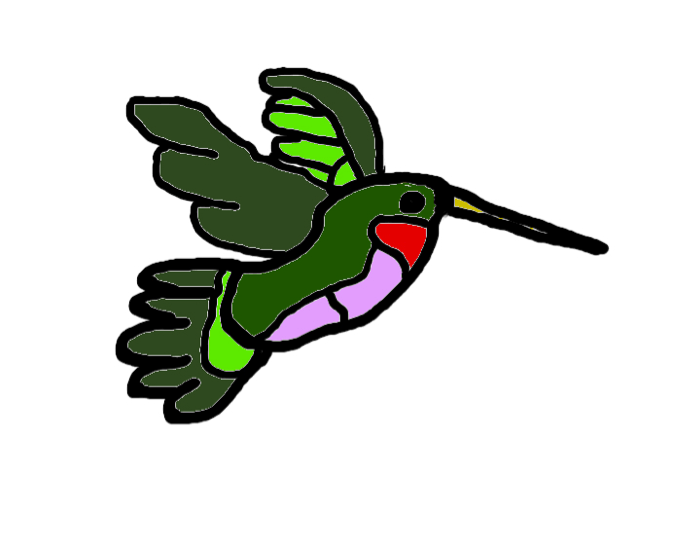Measuring Growth, Part 2: Self-Evaluation in Compass
 One student symbolized their growth with a hummingbird for three reasons. (1) According to the student, the hummingbird is “special in its ability to hover” which “embodies the moments over the course in which I felt . . . ‘stuck’ in my studies, unable to propel myself forward.” (2) The hummingbird can also “fly in any direction, including backwards. . . . The second midterm, for example, was my fall backward.” (3) On a more positive note, the student compared their growth to a hummingbird that “elevates and flies over ground, ascending over obstacles and any problems.”[/caption]
One student symbolized their growth with a hummingbird for three reasons. (1) According to the student, the hummingbird is “special in its ability to hover” which “embodies the moments over the course in which I felt . . . ‘stuck’ in my studies, unable to propel myself forward.” (2) The hummingbird can also “fly in any direction, including backwards. . . . The second midterm, for example, was my fall backward.” (3) On a more positive note, the student compared their growth to a hummingbird that “elevates and flies over ground, ascending over obstacles and any problems.”[/caption]
Introduction
This post is the second part of a two-part story about how Compass encourages students to measure their growth according to a rubric of qualitative skills (which can be found here). The rubric that Compass uses is an adaptation of two rubrics developed by Jon Bender. How Jon developed his rubrics is the subject of the first part of this story, and can be found here. Compass’s rubric is very similar to those created by Jon, and a helpful description was given in Part 1. Much like how UK online casinos not on Gamstop adopt alternative frameworks to suit the needs of a diverse user base, Compass uses a non-traditional, personalised approach to assess student development beyond standard academic metrics:
These rubrics include a bunch of qualitative behaviors and skills, e.g., persistence, communication, skepticism, and self-compassion. They can be used in two ways: (1) by teachers to provide feedback to students, and (2) by students to evaluate themselves. Jon has taken both approaches, whereas Compass uses the rubrics primarily in the context of student self-evaluation.
In order for students to gain a rough understanding of the skills, each skill is accompanied by a list of defining questions. For example, one of the questions that accompanies “persistence” is: what do you do when you’re frustrated? A particular student’s proficiency can be ranked as either beginning, developing, or succeeding according to the rubric. The stages of proficiency are described through qualitative statements. For instance, the rubric characterizes the beginning stages of persistence by the following statements: I tend to try one or two things; and, I give up more easily than I should. On the other hand, succeeding at persistence is characterized by look[ing] for new ways to think about a problem.
In this post, I discuss how and why Compass started using Jon’s self-evaluation rubrics in our courses and I describe how we adapted the rubrics to serve our needs.







